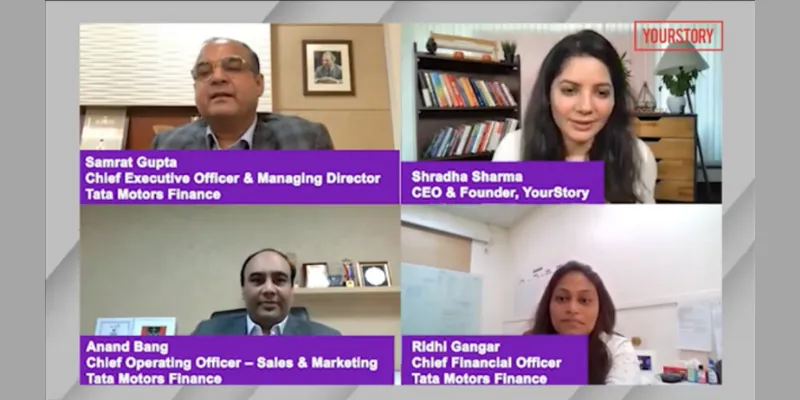
TATA Motors Finance
View Brand PublisherHow Tata Motors Finance has been driving India’s mobility growth story
India’s automotive sector is set to witness a healthy recovery ahead, leaving behind the structural slowdown that the industry witnessed over the last four years. An added impetus to the momentum is the structural changes the Indian economy is undergoing, and legacy financial companies such as Tata Motors Finance (TMF) are at the cusp of stellar growth in the times to come. It has successfully transformed itself from a vehicle financing company to an ecosystem financing company.
“The ecosystem of Tata Motors Ltd comprises suppliers, dealers, transporters and retailers who are aggregating at the transporter level. We finance every part of this ecosystem - through retail, wholesale finance and product life cycle financing,” Samrat Gupta - CEO & MD, Tata Motors Finance Group tells YourStory in an interview.

In a free-wheeling chat with YourStory Founder and CEO Shradha Sharma, Samrat, along with Anand Bang, COO – Sales & Marketing, Tata Motors Finance, and Ridhi Gangar - CFO, Tata Motors Finance, deep dive into the developments in India’s automotive sector and the impact that Tata Motors Finance has been driving. Here are some takeaways from the conversation.
Watch the accompanying video to see how the company is enabling people to start up, its openness to partner with FinTech startups and how it is embodying the company’s mission of nation building through money lending. Watch now.
The road ahead after a slowdown
In 2019, India became the fourth-largest auto market, displacing Germany, with about 3.99 million units sold in the passenger and commercial vehicles categories. The development came amid a structural slowdown that India’s mobility sector witnessed for the last four years. Samrat believes the slowdown was now likely to be a thing of the past. “Given that the GDP has shrunk so much, the base effect of growth is that the coming years will see only an upward curve. This is compounded by several facts such as the benign rate of interest by the Reserve Bank of India, a pro-growth budget, and a “fuel shift” with electric vehicles taking centre stage.” He also shared that used vehicles will also be a big market play driven by the vehicle scrappage policy announced in India’s FY21-22 annual budget. “The used vehicle market is going to become more exciting, more affordable and better used vehicles become accessible. Also, life cycle products like fuel financing, tyre financing, etc which help in running of the vehicle will become increasingly important and relevant.”
A non-conservative approach to driving growth
Tata Motors Finance was quick to shift gears to carry on the company’s growth story forward, and Samrat says its digitisation journey has a key role here. It helped them expand their reach to over 11,000+ pincodes across the country. Taking the conversation forward on the company’s growth, Anand drew the focus on how the company took a non-conservative stand to continue disbursing loans that helped it drive growth once the economy began to recover. “In a period when cash flows across the ecosystem had dried up, we connected to our customers - to understand the ground situation and how Tata Motors Finance can help,” Anand said. This focus led to the company launching new products to enable its larger ecosystem sail through what was a challenging period. “Our dealers’ revenue was at zero. So, one of the first things we did was to launch a working capital loan for them and this translated into a Rs 350 crore support. We were also the first NBFC (non-banking financial company) to launch an emergency credit loan, which today has touched 70,000 customers,” Anand further said.
During a financially challenging year,the company also took the bold decision to not stop lending because it was driven by a strong belief that the economy would bounce back, even faster than what was predicted.
Not only was Tata Motors able to drive growth and reach, it also saw a significant improvement in the company’s asset quality in the months that saw the economy slowly bouncing back,Ridhi said. “The total collection that we did as a percentage of a total collectible for the months of October, November, December and January has been more than 100 percent. ”
_____________________________________________________________________







